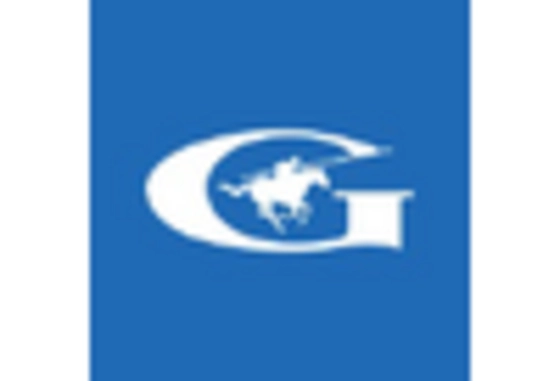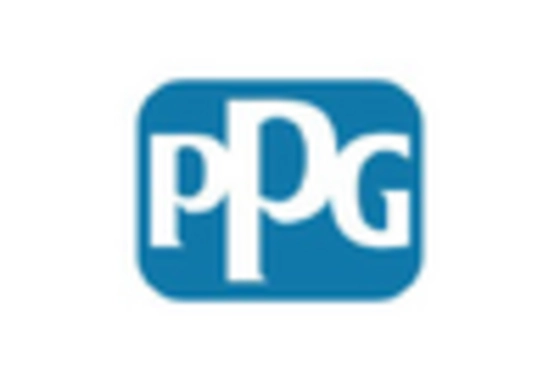-
EXECUTIVE SUMMARY
-
MARKET INTRODUCTION
-
Definition
-
Scope of the Study
- Research Objective
- Assumptions
- Limitations
-
RESEARCH METHODOLOGY
-
Overview
-
Data Mining
-
Secondary Research
-
Primary Research
- Primary Interviews and Information Gathering Process
- Breakdown of Primary Respondents
-
Forecasting Model
-
Market Size Estimation
- Bottom-Up Approach
- Top-Down Approach
-
Data Triangulation
-
Validation
-
MARKET DYNAMICS
-
Overview
-
Drivers
-
Restraints
-
Opportunities
-
MARKET FACTOR ANALYSIS
-
Value Chain Analysis
-
Porter’s Five Forces Analysis
- Bargaining Power of Suppliers
- Bargaining Power of Buyers
- Threat of New Entrants
- Threat of Substitutes
- Intensity of Rivalry
-
COVID-19 Impact Analysis
- Market Impact Analysis
- Regional Impact
- Opportunity and Threat Analysis
-
GLOBAL SOLAR CONTROL GLASS MARKET, BY APPLICATION
-
Overview
-
Residential Buildings
-
Commercial Buildings
-
Automotive
-
GLOBAL SOLAR CONTROL GLASS MARKET, BY REGION
-
Overview
-
North America
- US
- Canada
-
Europe
- Germany
- France
- UK
- Italy
- Spain
- Rest of Europe
-
Asia-Pacific
- China
- India
- Japan
- South Korea
- Australia
- Rest of Asia-Pacific
-
Rest of the World
- Middle East
- Africa
- Latin America
-
COMPETITIVE LANDSCAPE
-
Overview
-
Competitive Analysis
-
Market Share Analysis
-
Major Growth Strategy in the Global Solar Control Glass Market,
-
Competitive Benchmarking
-
Leading Players in Terms of Number of Developments in the Global Solar Control Glass Market,
-
Key Developments and Growth Strategies
- New Product Launch/Service Deployment
- Merger & Acquisitions
- Joint Ventures
-
Major Players Financial Matrix
- Sales & Operating Income, 2022
- Major Players R&D Expenditure. 2022
-
COMPANY PROFILES
-
Asahi Glass Company
- Company Overview
- Financial Overview
- Products Offered
- Key Developments
- SWOT Analysis
- Key Strategies
-
Saint Gobain
- Company Overview
- Financial Overview
- Products Offered
- Key Developments
- SWOT Analysis
- Key Strategies
-
NSG
- Company Overview
- Financial Overview
- Products Offered
- Key Developments
- SWOT Analysis
- Key Strategies
-
Xinyi Auto
- Company Overview
- Financial Overview
- Products Offered
- Key Developments
- SWOT Analysis
- Key Strategies
-
CSG Architectural
- Company Overview
- Financial Overview
- Products Offered
- Key Developments
- SWOT Analysis
- Key Strategies
-
Corning
- Company Overview
- Financial Overview
- Products Offered
- Key Developments
- SWOT Analysis
- Key Strategies
-
Central Glass
- Company Overview
- Financial Overview
- Products Offered
- Key Developments
- SWOT Analysis
- Key Strategies
-
Schott
- Company Overview
- Financial Overview
- Products Offered
- Key Developments
- SWOT Analysis
- Key Strategies
-
Sisecam
- Company Overview
- Financial Overview
- Products Offered
- Key Developments
- SWOT Analysis
- Key Strategies
-
Asahi India Glass
- Company Overview
- Financial Overview
- Products Offered
- Key Developments
- SWOT Analysis
- Key Strategies
-
APPENDIX
-
References
-
Related Reports
-
LIST OF TABLES
-
GLOBAL SOLAR CONTROL GLASS MARKET, SYNOPSIS, 2018-2032
-
GLOBAL SOLAR CONTROL GLASS MARKET, ESTIMATES & FORECAST, 2018-2032 (USD BILLION)
-
GLOBAL SOLAR CONTROL GLASS MARKET, BY APPLICATION, 2018-2032 (USD BILLION)
-
NORTH AMERICA: SOLAR CONTROL GLASS MARKET, BY APPLICATION, 2018-2032 (USD BILLION)
-
US: SOLAR CONTROL GLASS MARKET, BY APPLICATION, 2018-2032 (USD BILLION)
-
CANADA: SOLAR CONTROL GLASS MARKET, BY APPLICATION, 2018-2032 (USD BILLION)
-
EUROPE: SOLAR CONTROL GLASS MARKET, BY APPLICATION, 2018-2032 (USD BILLION)
-
GERMANY: SOLAR CONTROL GLASS MARKET, BY APPLICATION, 2018-2032 (USD BILLION)
-
FRANCE: SOLAR CONTROL GLASS MARKET, BY APPLICATION, 2018-2032 (USD BILLION)
-
ITALY: SOLAR CONTROL GLASS MARKET, BY APPLICATION, 2018-2032 (USD BILLION)
-
SPAIN: SOLAR CONTROL GLASS MARKET, BY APPLICATION, 2018-2032 (USD BILLION)
-
UK: SOLAR CONTROL GLASS MARKET, BY APPLICATION, 2018-2032 (USD BILLION)
-
REST OF EUROPE: SOLAR CONTROL GLASS MARKET, BY APPLICATION, 2018-2032 (USD BILLION)
-
ASIA-PACIFIC: SOLAR CONTROL GLASS MARKET, BY APPLICATION, 2018-2032 (USD BILLION)
-
JAPAN: SOLAR CONTROL GLASS MARKET, BY APPLICATION, 2018-2032 (USD BILLION)
-
CHINA: SOLAR CONTROL GLASS MARKET, BY APPLICATION, 2018-2032 (USD BILLION)
-
INDIA: SOLAR CONTROL GLASS MARKET, BY APPLICATION, 2018-2032 (USD BILLION)
-
AUSTRALIA: SOLAR CONTROL GLASS MARKET, BY APPLICATION, 2018-2032 (USD BILLION)
-
SOUTH KOREA: SOLAR CONTROL GLASS MARKET, BY APPLICATION, 2018-2032 (USD BILLION)
-
REST OF ASIA-PACIFIC: SOLAR CONTROL GLASS MARKET, BY APPLICATION, 2018-2032 (USD BILLION)
-
REST OF THE WORLD: SOLAR CONTROL GLASS MARKET, BY APPLICATION, 2018-2032 (USD BILLION)
-
MIDDLE EAST: SOLAR CONTROL GLASS MARKET, BY APPLICATION, 2018-2032 (USD BILLION)
-
AFRICA: SOLAR CONTROL GLASS MARKET, BY APPLICATION, 2018-2032 (USD BILLION)
-
LATIN AMERICA: SOLAR CONTROL GLASS MARKET, BY APPLICATION, 2018-2032 (USD BILLION)
-
LIST OF FIGURES
-
RESEARCH PROCESS
-
MARKET STRUCTURE FOR THE GLOBAL SOLAR CONTROL GLASS MARKET
-
MARKET DYNAMICS FOR THE GLOBAL SOLAR CONTROL GLASS MARKET
-
GLOBAL SOLAR CONTROL GLASS MARKET, SHARE (%), BY APPLICATION, 2022
-
GLOBAL SOLAR CONTROL GLASS MARKET, SHARE (%), BY REGION, 2022
-
NORTH AMERICA: SOLAR CONTROL GLASS MARKET, SHARE (%), BY REGION, 2022
-
EUROPE: SOLAR CONTROL GLASS MARKET, SHARE (%), BY REGION, 2022
-
ASIA-PACIFIC: SOLAR CONTROL GLASS MARKET, SHARE (%), BY REGION, 2022
-
REST OF THE WORLD: SOLAR CONTROL GLASS MARKET, SHARE (%), BY REGION, 2022
-
GLOBAL SOLAR CONTROL GLASS MARKET: COMPANY SHARE ANALYSIS, 2022 (%)
-
ASAHI GLASS COMPANY: FINANCIAL OVERVIEW SNAPSHOT
-
ASAHI GLASS COMPANY: SWOT ANALYSIS
-
SAINT GOBAIN: FINANCIAL OVERVIEW SNAPSHOT
-
SAINT GOBAIN: SWOT ANALYSIS
-
NSG: FINANCIAL OVERVIEW SNAPSHOT
-
NSG: SWOT ANALYSIS
-
XINYI AUTO: FINANCIAL OVERVIEW SNAPSHOT
-
XINYI AUTO: SWOT ANALYSIS
-
CSG ARCHITECTURAL: FINANCIAL OVERVIEW SNAPSHOT
-
CSG ARCHITECTURAL: SWOT ANALYSIS
-
CORNING: FINANCIAL OVERVIEW SNAPSHOT
-
CORNING: SWOT ANALYSIS
-
CENTRAL GLASS: FINANCIAL OVERVIEW SNAPSHOT
-
CENTRAL GLASS: SWOT ANALYSIS
-
SCHOTT: FINANCIAL OVERVIEW SNAPSHOT
-
SCHOTT: SWOT ANALYSIS
-
SISECAM: FINANCIAL OVERVIEW SNAPSHOT
-
SISECAM: SWOT ANALYSIS
-
ASAHI INDIA GLASS: FINANCIAL OVERVIEW SNAPSHOT
-
ASAHI INDIA GLASS: SWOT ANALYSIS









Leave a Comment